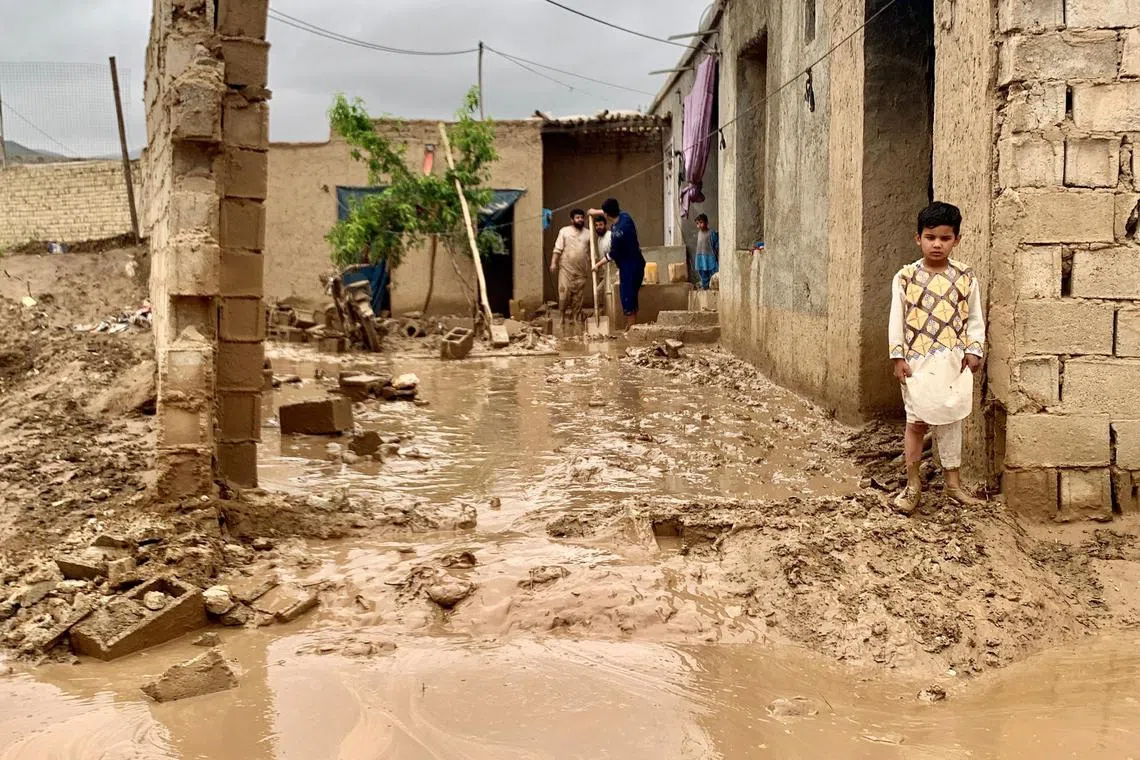Heavy storms kill at least 47 in eastern Afghanistan
Sign up now: Get ST's newsletters delivered to your inbox

Flash floods killed hundreds of people in Afghanistan in May and swamped the country's agricultural land.
PHOTO: REUTERS
Follow topic:
KABUL – The death toll from heavy rains in eastern Afghanistan rose to 47 on July 16, with 350 injured by the deluges, a local official said.
Intense storms lashed eastern Nangarhar province on the evening of July 15, sweeping away trees and causing the walls and roofs of buildings to collapse.
Mr Saifullah Khalid, head of Nangarhar’s disaster management authority, confirmed the updated toll and said some 400 homes had been demolished by the torrents.
A camp at the Torkham border crossing with Pakistan, built for Afghans returning to their country, was particularly devastated as tents were swept away.
“We share the grief of the families of the victims,” said Mr Zabihullah Mujahid, a spokesman for the Taliban government.
“The relevant institutions have been directed to go to the affected areas as soon as possible,” he wrote on social media platform X, adding that they would provide shelter, food and medicine to displaced families.
The tragedy comes after flash floods in May killed hundreds
Afghanistan is one of the poorest countries in the world and is particularly exposed to the effects of climate change, which scientists say is making extreme weather more common and severe.
In 2024, Afghanistan has witnessed an unusually wet spring after a very dry winter.
The Taliban government regularly announces support for those affected by natural disasters.
But most foreign missions and aid organisations left the country when the Taliban took over in 2021, shrinking the assistance available to Afghans. AFP

